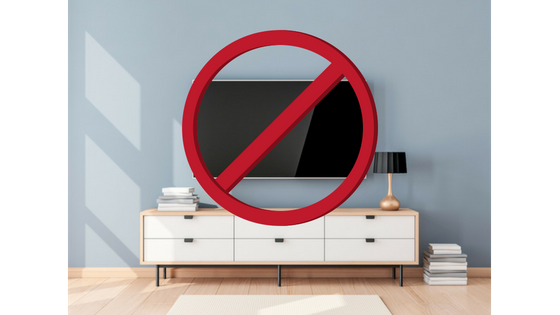Are commercial monitors and consumer TVs interchangeable?
They may look the same and appear to function the same, but commercial monitors and consumer TVs are built with entirely different capabilities. One of the most common technology mistakes A/V integrators see is a client using a flat screen TV in a commercial role. Many choose this route because commercial monitors cost quite a bit more than some big box TVs, but this is one instance where the buyer gets what they pay for. When businesses skimp on their digital displays, they are setting themselves up for frustration and added costs, even though they saved money up front with the TV. A reputable A/V integrator would never use a TV when an application calls for a monitor. That’s because experienced integrators think long-term, and consumer TVs are not intended for the kind of long-term use that businesses and organizations demand from their displays. And that’s just the beginning.What are the issues with substituting a monitor with a TV?
First, consider what these two displays are designed to do. One is meant for the home, where it will be used for entertainment purposes, intermittently. The other is built for commercial or public spaces, where it will be switched on and left alone for long stretches of time. There are significant engineering differences between the two, as well as differences in how the displays are serviced and how they are operated. Here’s a more precise comparison:1. Monitors are more heavy duty than TVs – Constant display usage generates a lot of heat, and heat is the mortal enemy of electronics. Let it go unchecked long enough, and complete failure is inevitable. This is the guiding thought behind how monitors are engineered, compared to how TVs are built. A monitor is designed with larger heat sinks and onboard fans, both of which mitigate the kind of heat that around-the-clock operation would generate.
TVs aren’t intended for constant use, so they don’t have the same protections built in. As such, they will fail after just a couple months of uninterrupted usage. What began as a budget-saving choice is becoming a lot more expensive.
2. Monitors are packaged with superior warranties – From a warranty perspective, display manufacturers do not consider commercial monitors and consumer TVs to be the same. If a business insists on placing a TV where a monitor should go, then they likely won’t have much of a warranty to draw from. Manufacturers specifically reduce or void warranties when the TV is used like a monitor, so the business will have no manufacturer protection should the TV fail, and fail it will.
Commercial monitors, owing to their superior craftsmanship, are packaged with comprehensive warranty protection. It’s standard for manufacturers to offer a 3-year warranty that comes with onsite protection. If the monitor experiences any kind of failure, the manufacturer will send a technician to the facility and service it there.
If additional protection is desired, then businesses can opt for a service agreement through their A/V integrator. Integrators know that the job isn’t over once the technology is installed. It will need frequent preventative maintenance and the occasional checkup when something goes wrong. As such, an A/V integrator will work with its clients to customize a service agreement that fits perfectly.
3. Monitors are much easier to control – Commercial monitors are expected to be part of larger A/V infrastructures, while consumer TVs are not. Once in place, monitors are not controlled at the display or with a remote like a TV. They are managed remotely using software designed just for this purpose. Monitors are often built with media players that come with this software already in place, which means they are ready to serve in a digital signage role right away.
A/V control systems are designed to interface with monitors, and not with TVs. Controlling a TV remotely and with display software, then, is much less reliable, and many times impossible. Monitors, on the other hand, can be handled precisely from any location.
4. Monitors are compatible with additional layout options – Displays are supposed to make a visual impact, and video walls even more so. It helps that monitors can be arranged in ways that allow for interesting layout choices. For example, many monitors can be oriented vertically for a different look, and one that is popular among users. Monitors can also be tied together with less effort, allowing for video applications.
Televisions are not designed for anything other than horizontal orientation, and functioning as a single display. Rotating the television will only accelerate its demise.
5. Monitors are designed with additional security features – Again, monitors and televisions do two different things. One is for use in the home, where the only people who will use it are family members and friends. The other is accessible by dozens, even hundreds of employees. If installed in public spaces, thousands of people may pass it on a daily basis. The question is, then, what is keeping those thousands of people from accessing the display’s controls?
Monitors are built with control locking features so that only people with the proper permissions can alter the display’s function. Televisions aren’t, and what’s keeping an employee from accessing their favorite streaming site and watching a show on company time? Current generation televisions come with memory storage for various apps, and there’s nothing stopping someone from downloading any app they want and using the television like it was their own personal entertainment platform. Imagine the embarrassing situations this oversight can get the company into.
Commercial monitors may cost more, but that’s because they are designed with features that make them worth more. The state of a company’s digital signage reflects on its professionalism and attention to detail. The best way to create the right impression is with displays that are suited for the job.


